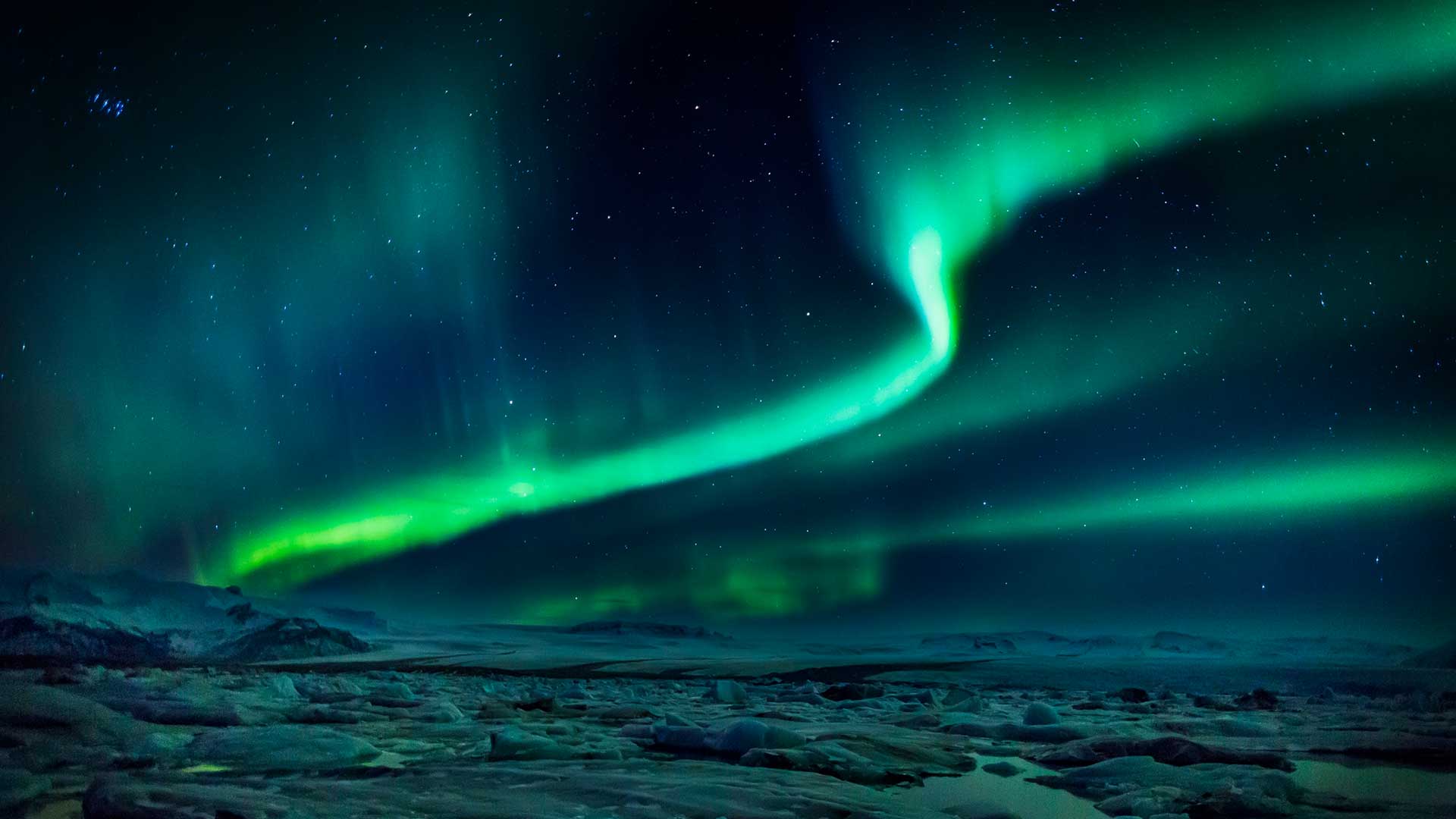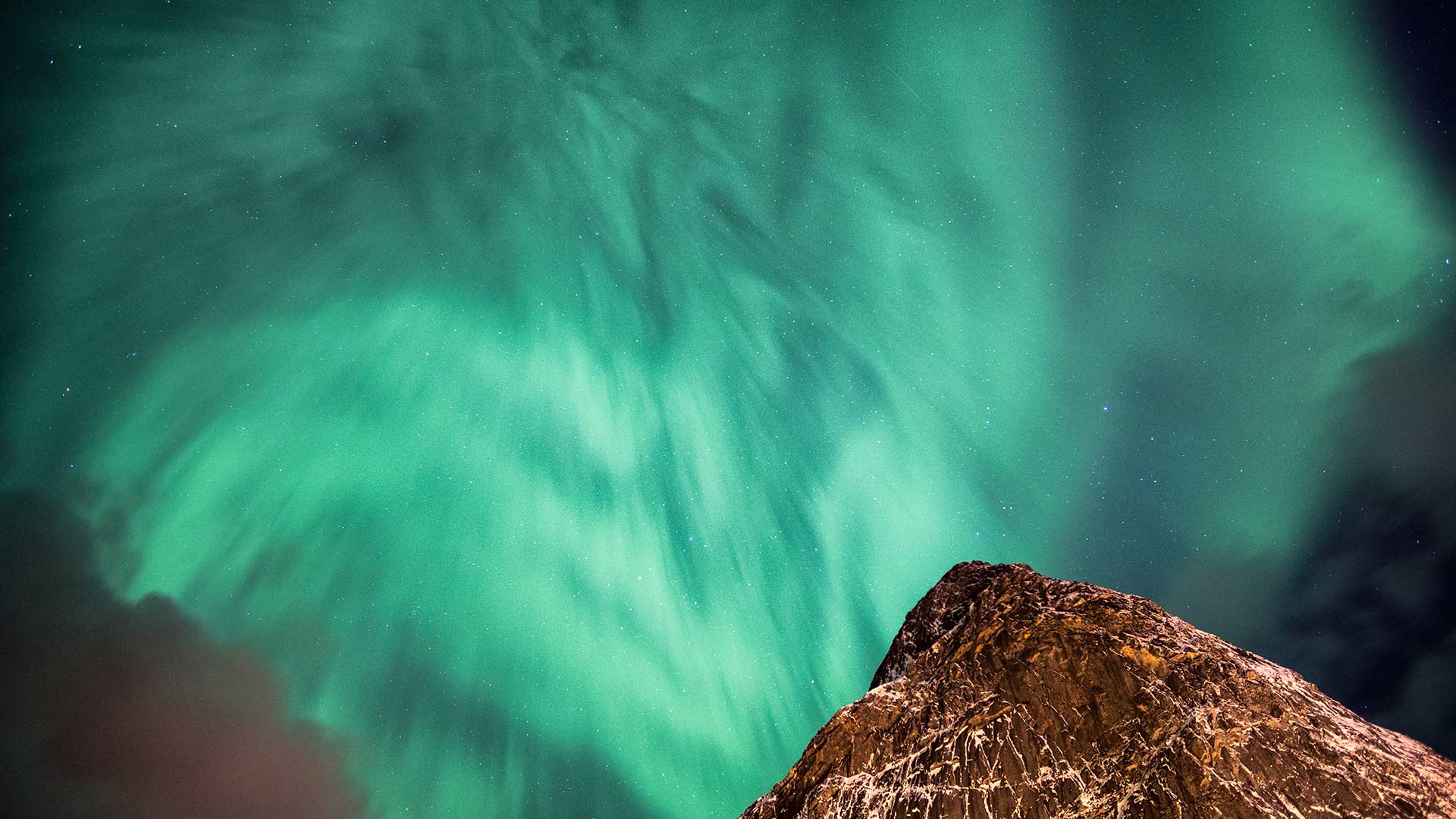Spring is typically aurora season each year. Here's why.

Legend had it that these eerie night-time displays of colored lights originated from the far-northern seas or from the reflection of sunlight off of polar ice. I highly recommend seeking out the "The Ballad of the Northern Lights" penned by a British-Canadian poet and writer, often called "the Bard of the Yukon," Robert W. Service (1874-1958).
I was introduced to Service as a young boy, listening to humorist Jean Shepherd on his popular nightly radio show aired on WOR/710 in New York. On one frigidly cold night, "Shep" decided to read Service's story of three miners who traveled north into the frozen tundra of the arctic. Only one of the three survived and toward the end of the story, he is found in a bar and describing what he claimed was the source of the northern lights to another bar patron:
'Some say that the Northern Lights are the glare of the arctic ice and snow. And some say they're electricity — nobody seems to know. But I'll tell you now—and if I lie, may my lips be stricken dumb. It's a mine — a mine of the precious stuff that men call radium. It's a million dollars a pound, they say, and there's tons and tons in sight. You can see it gleam in a golden stream in the solitudes of night.'
Atmospheric antics

Service's explanation, of course, was wrong. The truth of the matter is, that this colorful phenomenon occurs in the outer layers of our atmosphere 60 to 600 miles up, known as the ionosphere. Whenever a flare erupts on the sun, sharp streams of electrified, subatomic particles — solar winds — flow through space toward Earth.
They travel at speeds of between two to 5 million mph, and are attracted toward the north and south magnetic poles. Ultimately, they collide with molecules and atoms of rarefied gases one or two days later. These atoms are temporarily stripped of some of their electrons by the collision or near collision. The atoms absorb energy in the process and, within a millionth of a second, regain their lost electrons, re-emitting this energy in the form of light composed of various colors.
Actually, the sun is constantly spraying our planet with electrified particles. Around the north and south magnetic poles, the skies are perpetually glowing with solar overcharge. Up in the polar regions — Alaska, northern Canada, Iceland and Greenland, some form of auroral activity is evident on most any clear, dark night. But should a major solar flare erupt, the zone of auroral visibility can be pushed well to the south, allowing those in the contiguous US a rare chance to see the shifting, glowing, diffuse dance of yellow, pink and green lights for themselves.
Auroras are difficult to describe. They seem to come and go; arcs start at the horizon and spread upward; fluttering streamers, curtains and rays sometimes can extend toward the zenith. The varieties and forms that an aurora can take are almost infinite.
Breaking space news, the latest updates on rocket launches, skywatching events and more!
Best time to see the northern lights

Around the equinoxes, the Earth's axis is side-on to the sun, which happens to sync with the magnetic field of the solar wind. That means that around the time of an equinox, charged particles are more likely to be accelerated down the field lines of Earth's magnetic poles, enhancing the possibility of making an auroral sighting. And some of the most spectacular auroras have occurred around this time of year.
On March 23, 1969, as seen from Jones Beach, Long Island, the entire sky was aurora-covered save for 20 degrees above the sea horizon to the south. From Willimantic, Connecticut, an observer likened the rays to the ribs of an open umbrella.
On April 12, 1981, a bright aurora consisting of colors ranging from reddish rust to turquoise and aquamarine was seen as far south as Phoenix, Arizona.
Then on March 13, 1989, what even veteran observers remarked as ‘one of the grandest displays in memory’ took place. I was living in Levittown, Long Island, New York at the time and my wife Renate and I were awakened at 1:30 a.m. by an acquaintance who said he believed he was seeing an aurora from light-polluted Union, NJ. We opened up our north-facing bedroom window just in time to catch a sudden explosion of green and blue light which soared all the way to the zenith. Upon rushing outside, we saw other parts of the sky pulsing with stunning shades of reds and pinks. This remarkable aurora was seen all the way down to the Gulf Coast, and its associated magnetic storm tripped circuit breakers on Hydro-Quebec's power grid, plunging millions into darkness for nine hours.
Aurora sightings are possible around the fall equinox
The time around the September equinox can also favor aurora sightings. On Sept. 18, 1941, a dazzling auroral display was seen as far south as Jacksonville, Florida. My mother often told me of how, as a little girl growing up on the upper east side of Manhattan, she and my grandparents were witnesses to a sensational Northern Lights display.
She said that many crowded the city streets watching the spectacular show in amazement. One elderly Italian woman started crying out that the end of the world was at hand; she was ultimately calmed by my grandfather (who spoke fluent Italian) and explained to her what was transpiring above her head.
It was my grandfather who, as a teenager, also witnessed a total solar eclipse in New York, and would later spark my interest in astronomy by taking me to my first total eclipse in 1972. He had a good knowledge of things pertaining to space and the sky.
Sorry Dodgers fans!
But that 1941 auroral show provided to be more of an annoyance to fans of the Brooklyn Dodgers, who missed 15 minutes of that day's broadcast between the Dodgers and Pirates at Pittsburgh's Forbes Field. That's because the geomagnetic storm had temporarily blacked-out radio communications and during that interval, the Pirates scored four runs, much to the chagrin of Dodger fans straining to hear the game.
According to The New York Times, ‘Thousands of Brooklyn followers meanwhile had telephoned the station and displayed little satisfaction with the explanation that the sun was to blame.’
When is the next best northern lights display?
Solar activity is on the rise and is expected to peak in late 2024 or 2025, but a major flare could erupt at almost any time. To get updates on the next possible auroral display which might be visible from your area check out the website SpaceWeather.com, which provides the latest news and information about the sun-earth environment.
Joe Rao serves as an instructor and guest lecturer at New York's Hayden Planetarium. He writes about astronomy for Natural History magazine, the Farmers' Almanac and other publications. Follow us on Twitter @Spacedotcom and on Facebook

Joe Rao is Space.com's skywatching columnist, as well as a veteran meteorologist and eclipse chaser who also serves as an instructor and guest lecturer at New York's Hayden Planetarium. He writes about astronomy for Natural History magazine, Sky & Telescope and other publications. Joe is an 8-time Emmy-nominated meteorologist who served the Putnam Valley region of New York for over 21 years. You can find him on Twitter and YouTube tracking lunar and solar eclipses, meteor showers and more. To find out Joe's latest project, visit him on Twitter.
